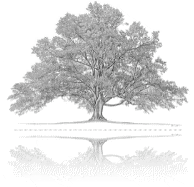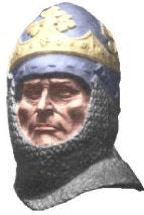Genealogy
The Declaration of Arbroath - Scotland 1320
The Declaration of Arbroath - Scotland 1320
"For as long as but a hundred of us remain alive, never will we on any condition be brought under English rule. It is not for glory, nor riches, nor honours that we are fighting, but for freedom - for that alone, which no honest man gives up but with life itself."
Although the English armies under Edward II were routed at Bannockburn in 1314 and by 1319, with the recapture of Berwick, effectively expelled from Scottish soil, they continued to mount attacks into Robert the Bruce's Scotland over the succeeding years.
Pope John XXII had not accepted Scottish independence, perhaps partially because Robert the Bruce had been excommunicated for killing John Comyn in a church in Dumfries in 1306 (Comyn had formed an alliance with Edward, but perhaps had more of a right to be King than Bruce).
Thus the Declaration of Arbroath was prepared as a formal Declaration of Independence for Scotland. It was drawn up in Arbroath Abbey on the 6th of April 1320, most likely by the Abbot, Bernard de Linton, who was also the Chancellor of Scotland.
The Declaration made a number of much-debated rhetorical points: that Scotland had always been independent, indeed for longer than England; that Edward I of England had unjustly attacked Scotland and perpetrated atrocities; that Robert I of Scotland (Robert the Bruce) had delivered the Scottish nation from this peril; and, most controversially, that the independence of Scotland was the prerogative of the Scots people, rather than the King of Scots. In fact it stated that the nobility would choose someone else to be king if the current one did anything to threaten Scotland's independence.
While often interpreted as an early expression of 'popular sovereignty' - that kings could be chosen by the population rather than by God alone - it can also be argued to have been a means of passing the responsibility for disobeying papal commands from the king to the people. In other words, Robert I was arguing that he was forced to fight an illegal war (as far as the Pope was concerned) or face being deposed.
The seals of eight earls and as many as forty-one other Scottish nobles were appended to the document. The Declaration was then taken to the papal court at Avignon. The Pope seems to have paid some heed to the arguments contained by the Declaration. It was in part due to his intervention that a short-lived peace treaty between Scotland and England, the Treaty of Northampton, renouncing all English claims to Scotland, was finally signed by the English king, Edward III, on the 1st of March 1328.
Copyright © Mike Perry, 2011



